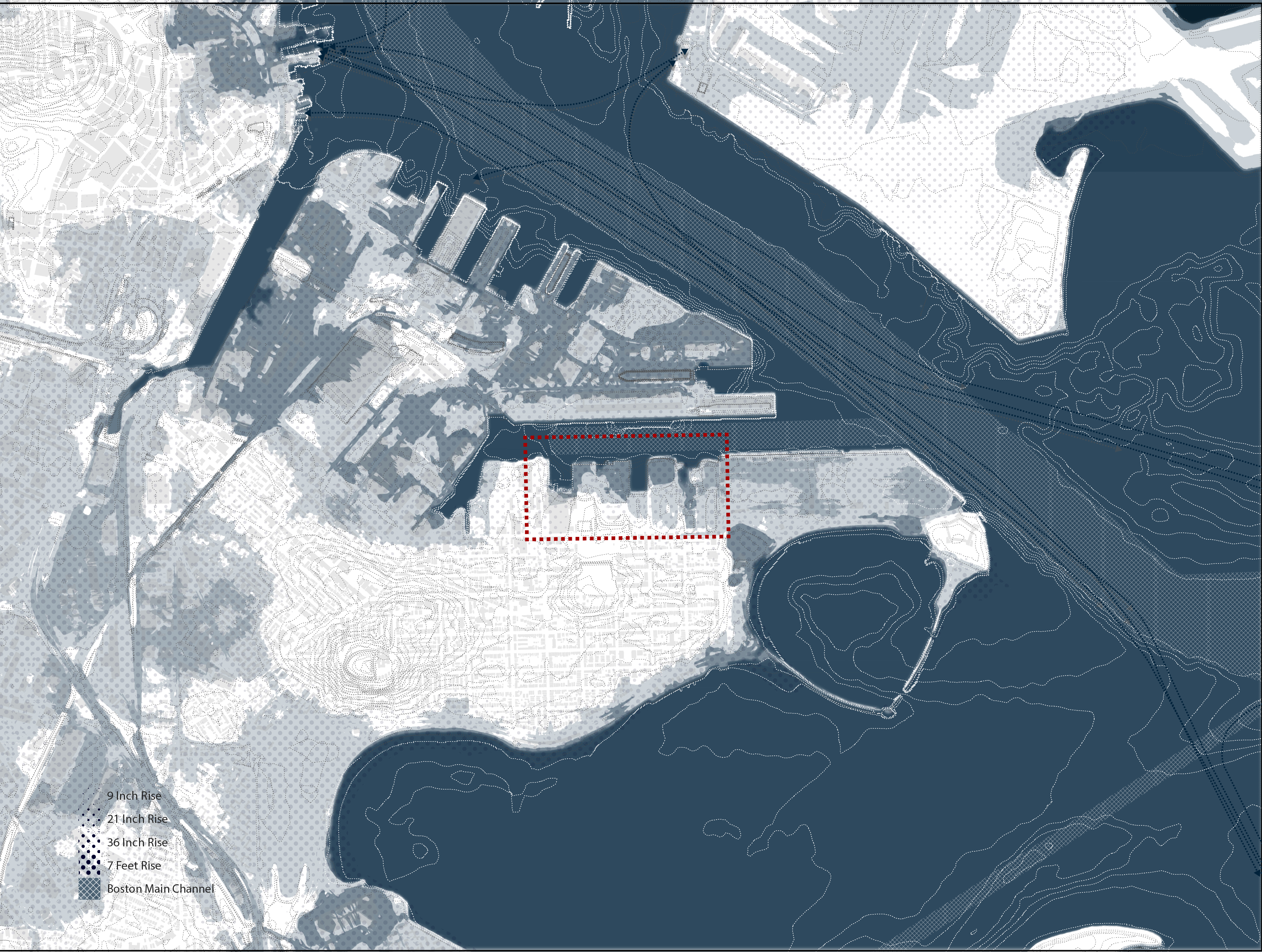#SpatialDesign #LandscapeArchitecture
The Living Edge
; adaptive city to climate changeHarvard Gruadate School of Design | 2017
Instructor: Montserrat Bonvehi Rosich
Team: Hanna Ruth, Bailun Zhang
Duration: 3 months
Role: Ideation, Plan, Rendering, Diagram, Prototyping
Tool: ArcGIS, Rhino, Grasshopper, Adobe Illustrator, Adobe Photoshop
Model Making: CNC, Laser Cutting
> How might we design the city more resilient to climate change?

>> The strategy of the stormwater filtering channel system created the structure of the plan, and the tidal pool is used as the indicators of sea level rise.
Description
This project focuses on adapting the City of Boston to the impacts of climate change through the expansion and transformation of the edge. The edge is defined as the meeting of two conditions where the interaction between them is intensified such that a new condition emerges, unique to that edge.
The idea of the rocky coast and tidal pool helped to define the pattern of the plan, and the strategy of the stormwater filtering channel system created the structure of the plan. Under this pattern and structure, different elements and infrastructures are added on top of this surface to enrich this built environment. It is maximized for the interactions of edges between soft and hard, public and private and stable and dynamic.
Background
Background


Boston is highly susceptible to the negative impacts of climate change due to its proximity to the ocean and the extensive filling of wetland and coastal waters. Storm surge from hurricanes, sea level rise, and more frequent and intense rain storms threaten to flood much of the city, including our site along the Reserve Channel in South Boston.


Strategy: Edge
When the edge between what is land and what is water is distorted due to climate change, it becomes necessary to design a new edge: one that can react and adapt to change without jeopardizing those who live at the edge.

︎︎︎ Go Back